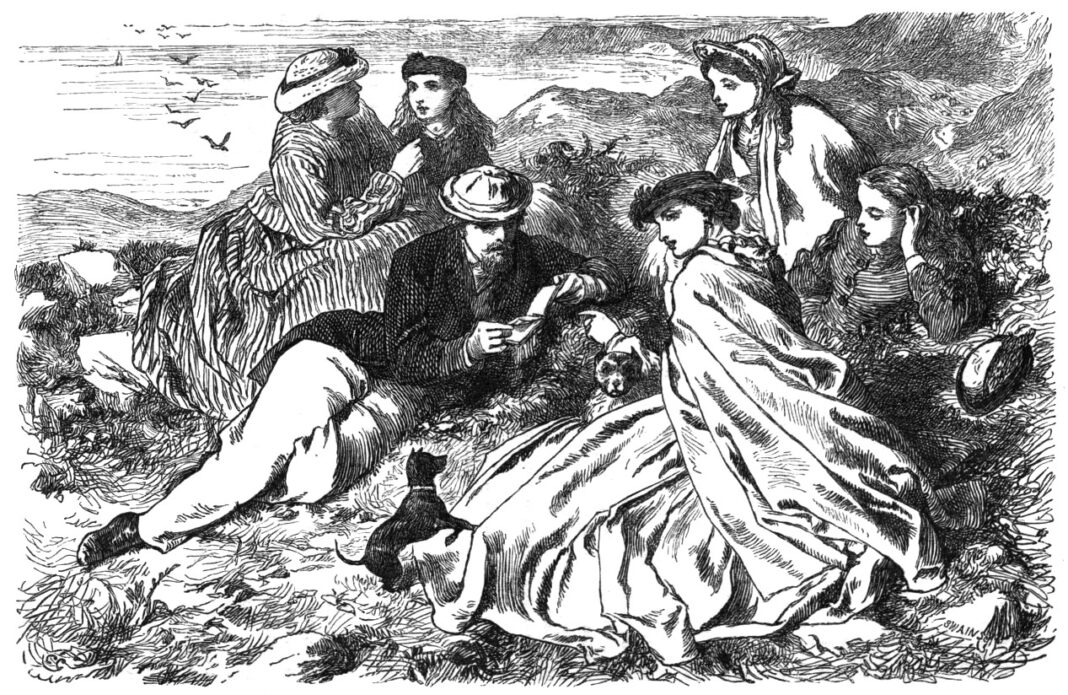When you hear the phrase, “Christian poetry,” what comes to mind? Verse with rhymes as shopworn as breeze/trees? Re-hashed Sunday school stories, less dynamic than flannelgraph? Warmed-over sentiments as cloying as kitten videos? A shuffling of stock religious tropes a computer could have generated?
Sadly, such writing exists—and seeks to cover its multitude of sins (artistic and otherwise) with the label “Christian poetry.” But there is a different kind of poetry by writers serious about their Christian faith and their poetic craft. Not just great poets of the past, like Herbert and Donne and Hopkins, or even of the past century, like Eliot and Auden, but poets who are alive and still writing. There are more of them than you might think, and they are doing good work.
In fact we may be experiencing a “revival of Christian poetry in America.” That at least is what Micah Mattix claims in the introduction to Christian Poetry in America Since 1940: An Anthology, which he co-edited with Sally Thomas. This anthology provides ample evidence for that claim and richly illustrates the variety of Christian poetry.
What in the view of the editors constitutes Christian poetry? Mattix takes up that question in his lucid and illuminating introduction, where, with the aid of key literary thinkers, he works toward an answer. He begins with C. S. Lewis (of course!) who asserts that in terms of technique and form a poem written by a Christian does not differ from one written by a pagan, but then suggests there may be a “Christian approach.” Largely that approach has to do with understanding that reality includes both the material and spiritual so that the poet addresses both. As Mattix concludes, “a work of art in the Christian view is inherently double—both surface and depth, material and immaterial” (16).
For Mattix this view stands in stark contrast to what he sees as a dominant (and still growing) anti-symbolist trend in recent American poetry, a return to a purely material view of experience (and of language). In the extreme, such a view results in a poetry of pure surface, where the poem is largely a language game and refers to little beyond itself. By contrast, the poets in this volume affirm a world comprised of matter and spirit. And, while many recognize the limits of human language and the ways it has sometimes been used to harm, they see language as capable of naming (or, at least, gesturing toward) the dance of matter and spirit that constitutes human existence.
That approach still leaves the editors with the difficult choice of which poets to include (or exclude). Some of the selection criteria, Mattix admits, are arbitrary: poets born in 1940 or after and (generally) still living, poets from North America. Some selections reflect the editors’ preferences. Less arbitrarily, they chose to exclude poets whose works is spiritual in a general sense and opt instead for poems that “for the most part, treat matters of Christian doctrine and practice directly” (21).
Though specific (and in some sense narrow), these criteria do not result in monotony or homogeneity. Far from it, the poets in this anthology represent a wide range of denominational traditions and devotional practices, as well as a variety of faith journeys (from cradle believers to converts to those raised in the faith who left it and then returned). They also vary stylistically and in how they approach Christian faith and experience, ranging from poems of devotion to poems of doubt. In fact, much like the Psalms, these poems reflect a whole range of the emotions, attitudes, and actions found in the life of faith: doubting, questioning, arguing, mocking, weeping, petitioning, lamenting, thanking, and praising.
Each of the thirty-five poets included in the anthology is represented by at least two poems. The poets appear in order of their birthyears, beginning with 1940 and working toward the present. The result is a delightful juxtaposition of voices, styles, and concerns. The author introductions are especially helpful. In addition to providing details of biography and publishing history, they explain the writer’s key concerns and approach and often offer an illuminating reading of one of the poems in the anthology. As such they provide an excellent entryway to each poet’s work.
This anthology accomplishes several valuable tasks. First, it stands as Exhibit A in demonstrating the truth of Mattix’s claim for a renaissance in Christian poetry. Second, given the range of poets, it will likely reacquaint you with some old friends and introduce some new ones. (In fact, your list of books to buy is guaranteed to get longer.) And third, its poems deepen our sense of the Christian life. “O taste and see” the psalmist implores, and good poems help us do that. Drawing on the resources of poetry, these fellow pilgrims help us taste and see the Christian life in new ways as we share their struggles for and with and in faith. Indeed, to borrow a phrase from Lewis, they offer something “universally profitable.”
Image credit: “A Modern Idyll” via Wikimedia Commons












